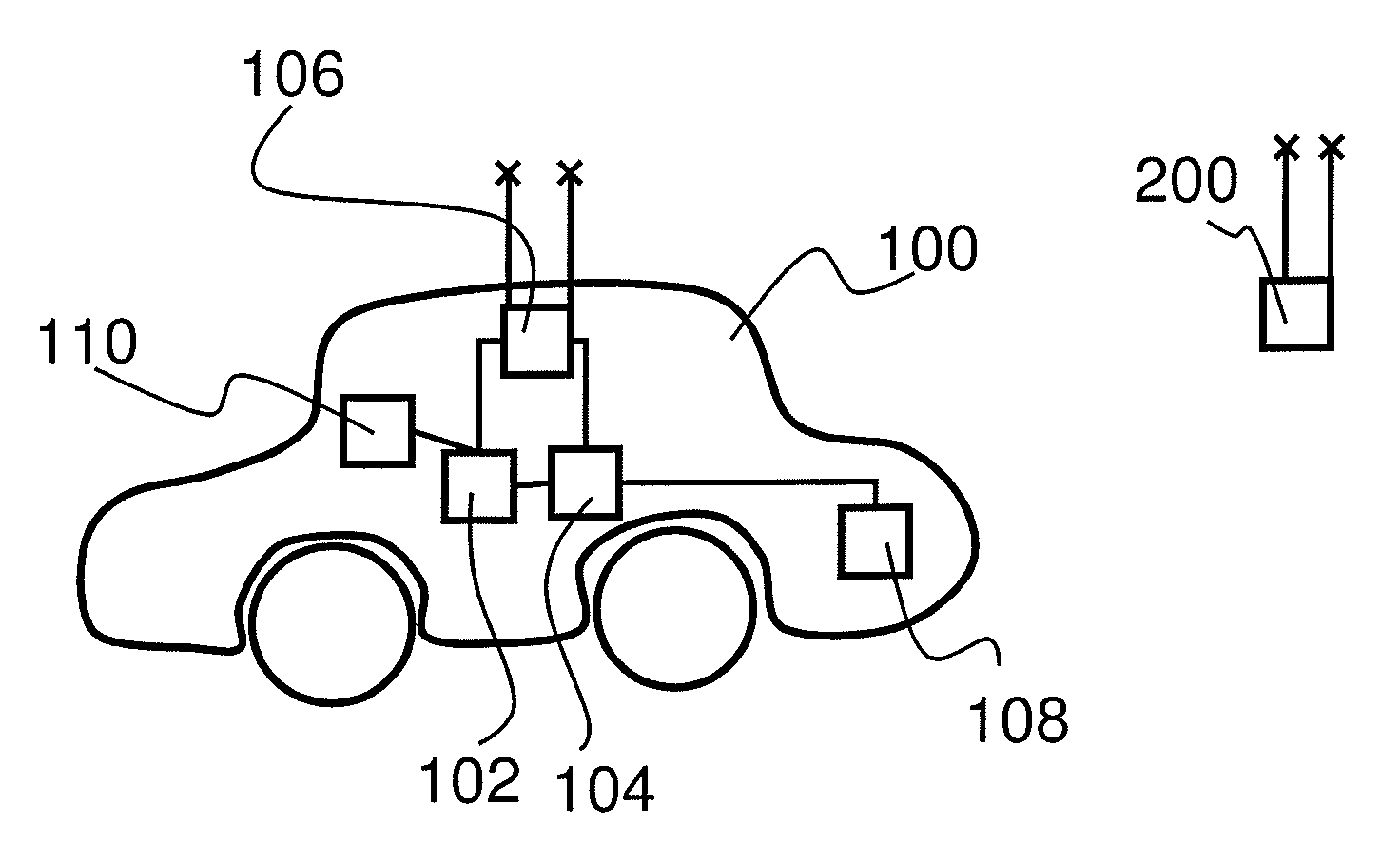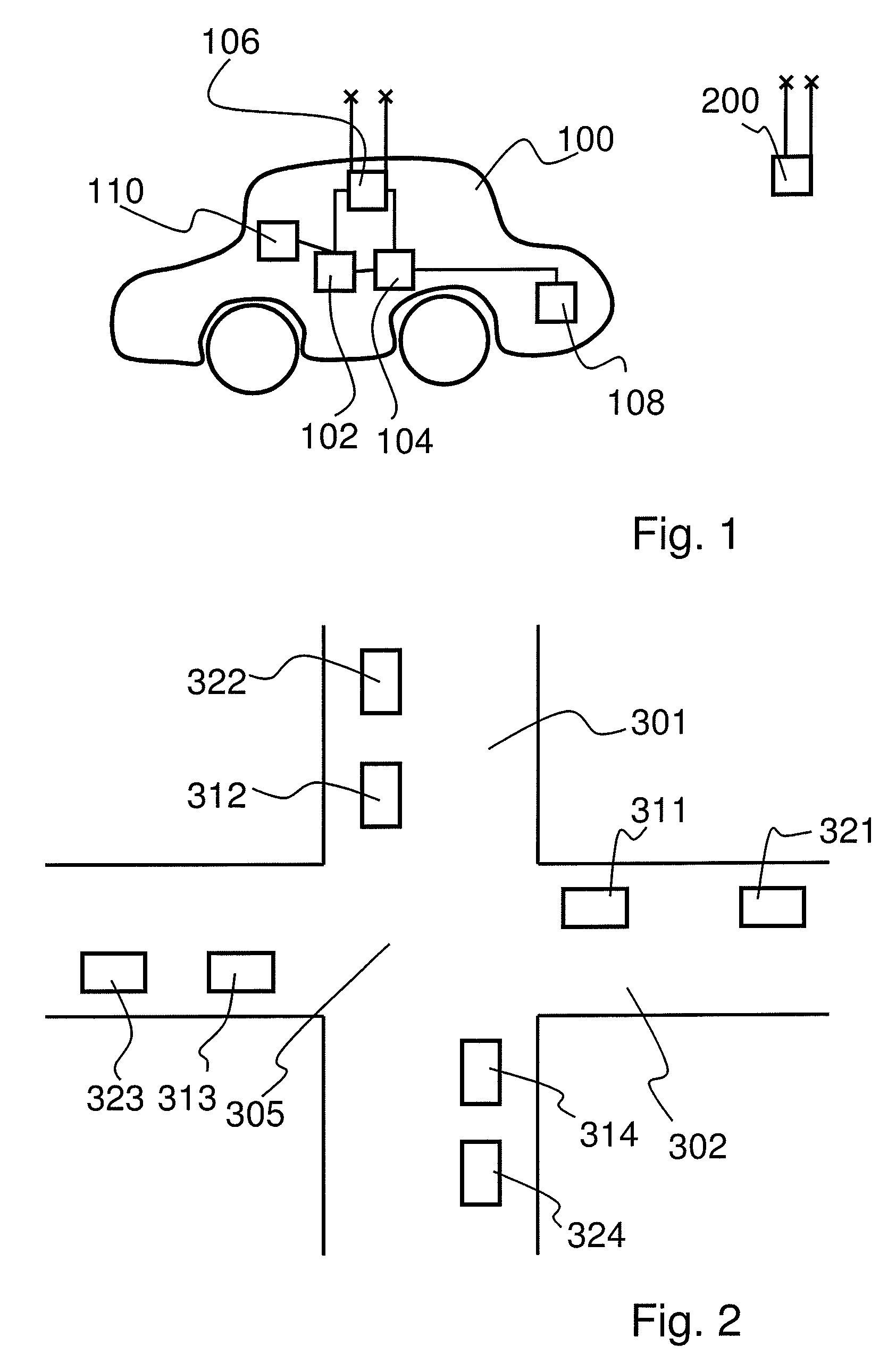Device and method for C2X communication
a communication device and communication technology, applied in traffic control systems, navigation instruments, instruments, etc., can solve the problems of not bringing any advantages to the communication of vehicles with one another or between vehicles and infrastructure devices, and achieve the effects of reducing latency, reducing latency, and reducing latency
- Summary
- Abstract
- Description
- Claims
- Application Information
AI Technical Summary
Benefits of technology
Problems solved by technology
Method used
Image
Examples
example 1
[0052]By means of the environment sensor 108 or due to a braking intervention, the vehicle 100 detects a smooth road having a correspondingly low friction coefficient. Immediately after the detection of the low friction coefficient, at least the friction coefficient and the location at which the low friction coefficient has been detected is sent for a few 100 milliseconds to other vehicles via the second communication channel, for example the RKE communication channel having the low latency period since the hazard situation must be forwarded rapidly to other vehicles.
[0053]However, this information is contemporaneously sent out also via the first communication channel, for example the CoCar communication channel. Sending the information via this communication channel can be stopped after some time since the intelligence in the communication network ensures that the information is retained.
[0054]The low friction coefficient is used in the respective vehicle, for example in a distance...
example 2
[0056]The vehicle 100 sends its position and other basic data, for example the speed and in each case a time stamp periodically via the first mobile radio channel, for example the CoCar mobile radio channel by means of the communication device. On the basis of this data, the vehicle 100 generates from its environment an environment model. If the vehicle 100 then detects that it is approaching an intersection, a check is made whether another vehicle having the same direction of movement is also approaching the intersection.
[0057]Such a situation is shown by means of FIG. 2. The roads 301 and 302 intersect at the intersection 305. The vehicles 311, 312, 313, 314, 321, 322, 323, 324 approach the intersection 305. Using the environment model which is determined in each vehicle 311 to 324, the vehicles 311, 312, 313, 314 find out that they are nearest to the intersection and will soon cross the intersection 305. These vehicles will then send out with high repetition rate data such as spe...
example 3
[0060]Vehicle 100 is driving closely behind a second vehicle. Each vehicle determines by analyzing the situation that a collision threatens in the case of rapid braking. Therefore, static data such as mass, lengths etc. are exchanged prophylactically via the first communication channel, for example a CoCar mobile radio channel.
[0061]If then the “rapid braking” event occurs, only dynamic information relating to this event is sent out via the second communication channel, for example an RKE communication channel. The radiated power via the second communication channel is low since the data need to be exchanged only between two vehicles following one another.
List of Reference Designations
[0062]100 Vehicle[0063]102 Safety system[0064]104 Driver assistance system[0065]106 Communication device[0066]108 Environment sensor[0067]110 Memory[0068]200 Infrastructure device[0069]301, 302 Road[0070]305 Intersection[0071]311, 312 Vehicle[0072]313, 314 Vehicle[0073]321, 322 Vehicle[0074]323, 324 Ve...
PUM
 Login to View More
Login to View More Abstract
Description
Claims
Application Information
 Login to View More
Login to View More - R&D
- Intellectual Property
- Life Sciences
- Materials
- Tech Scout
- Unparalleled Data Quality
- Higher Quality Content
- 60% Fewer Hallucinations
Browse by: Latest US Patents, China's latest patents, Technical Efficacy Thesaurus, Application Domain, Technology Topic, Popular Technical Reports.
© 2025 PatSnap. All rights reserved.Legal|Privacy policy|Modern Slavery Act Transparency Statement|Sitemap|About US| Contact US: help@patsnap.com


